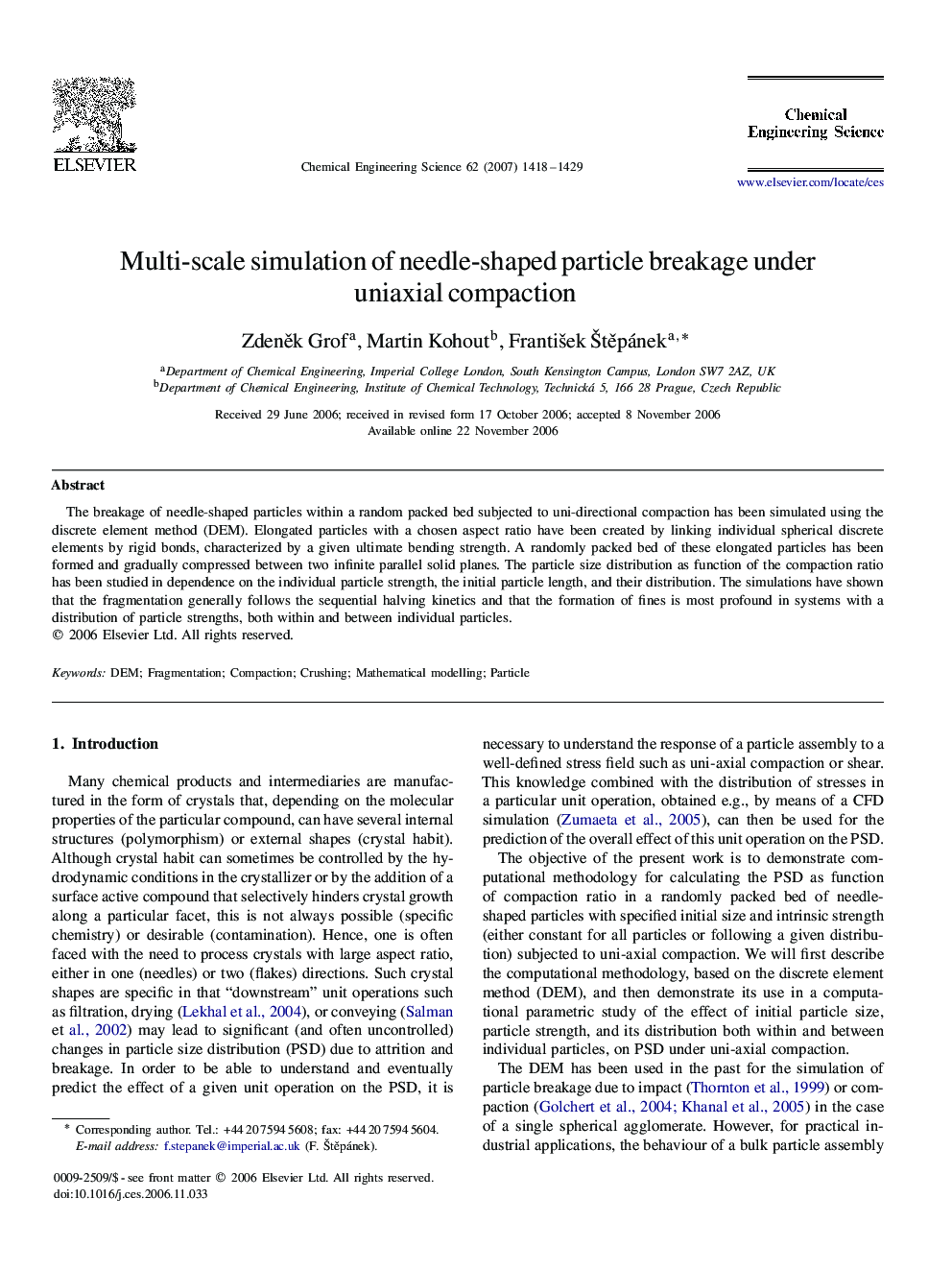| Article ID | Journal | Published Year | Pages | File Type |
|---|---|---|---|---|
| 158417 | Chemical Engineering Science | 2007 | 12 Pages |
The breakage of needle-shaped particles within a random packed bed subjected to uni-directional compaction has been simulated using the discrete element method (DEM). Elongated particles with a chosen aspect ratio have been created by linking individual spherical discrete elements by rigid bonds, characterized by a given ultimate bending strength. A randomly packed bed of these elongated particles has been formed and gradually compressed between two infinite parallel solid planes. The particle size distribution as function of the compaction ratio has been studied in dependence on the individual particle strength, the initial particle length, and their distribution. The simulations have shown that the fragmentation generally follows the sequential halving kinetics and that the formation of fines is most profound in systems with a distribution of particle strengths, both within and between individual particles.
